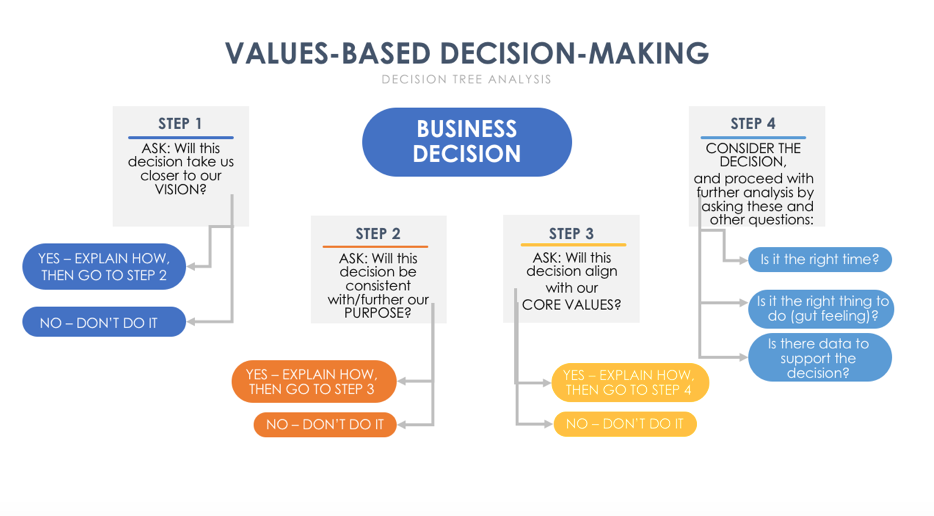Analyzing vision and mission statements from 5 famous* companies
Analyzing vision and mission statements from 5 famous* companies

In this article let’s look at the vision and mission statements of some famous companies which will help give some further context to the discussion in my last article.
Apple
Mission: “to bringing the best user experience to its customers through its innovative hardware, software, and services.”
Vision: “We believe that we are on the face of the earth to make great products and that’s not changing.”
Apple’s mission defines their X (what they do), but in my view their vision is more of a core belief than a vision. It doesn’t address the impact on the world they will have by pursuing their mission. So neither the vision nor the mission talks about why Apple does what it does.
Tesla
Mission: “to accelerate the world’s transition to sustainable energy.”
Vision: “to create the most compelling car company of the 21st century by driving the world’s transition to electric vehicles.”
This is example of a company that, in my view, has their mission and vision statements mixed up. Their vision is what they do (X), and their mission is why they do it (Y). Why do they want to create the most compelling car company and drive the world’s transition to electric vehicles? So that the world transitions to sustainable energy.
Tesla’s vision also brings up another point. A lot of companies have as part of their vision statement that they want to be the best. They use words like “leading” or “#1” or “pre-eminent” – or in Tesla’s case, “most compelling”. If you’re intent on having the fact that you want to be an industry leader as part of your purpose, I think the right place for that is in your mission. Being the industry leader (or striving to be an industry leader if you’re not there yet) is what your business does, it shouldn’t be why it does it.
Mission: “to give people the power to share and make the world more open and connected.”
Vision: “People use Facebook to stay connected with friends and family, to discover what’s going on in the world, and to share and express what matters to them.”
Facebook’s mission follows the We do X, so that Y formula (although they use “and” instead of “so that”). They give people the power to share (X) so that the world is more open and connected (Y). In Facebook’s view, giving people the power to share makes the world a better place by making it more open and connected. Their mission succinctly describes the company’s what and why.
Their vision is an example of the “snapshot” I described in my last article. If people are using Facebook to stay connected, get their news, and express themselves, then that is evidence that their mission to give people the power to share and to create a more connected world has been achieved. I think their snapshot could be more compelling, or at least updated (since pretty much their vision has become reality at this point).
Patagonia
Mission: “We’re in business to save our home planet.”
Vision: no formal vision statement.
Patagonia is an example of a company that chose not to have both a vision and mission statement. So there – you have permission to do that too!
Their mission statement skips the X and goes right to the Y. Someone who isn’t familiar with what Patagonia does isn’t going to find it out by reading their mission statement. (I think this is ok for a global brand, but I wouldn’t recommend this approach if you’re not.) But they sure are going to find out why they do it: to save the planet. As far as missions go, it doesn’t get more purposeful than that.
Which brings me to another point for you to consider. If you’re going to have only a vision or a mission statement for your business, you might consider calling it a purpose statement. That’s what we settled on after going through the vision/mission process several years ago with my wife’s business. We created one purpose statement, and put it up on the wall. Here it is:
Fredericton Family Chiropractic (* ok maybe not so famous 😉 )

Our purpose is to transform and save lives by providing outstanding chiropractic care to our patients and by inspiring and empowering all members of our community to become the best version of themselves by living the Creating Wellness Chiropractic Lifestyle: Be Fit. Eat Right. Think Well. Get Adjusted.
This doesn’t exactly follow the if X then Y formula, but it’s a variation of it. The Y is at the start (to transform and save lives) and the X is the rest of it.
There is no separate formalized vision for her business. But her “snapshot” vision is a community where every family has their next chiropractic visit circled on their family calendar.
So there you have it, a review of the mission and vision statements for five of the most well-known companies in the world (lol). My wife will be pleased she’s keeping company with Apple, Tesla, Facebook, and Patagonia! Hopefully it provides some context for creating the vision and mission (or purpose) statements for your business.



